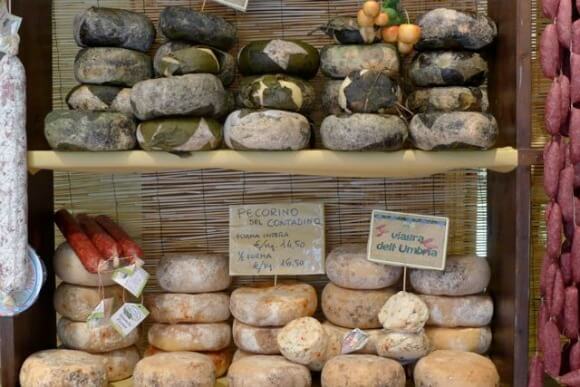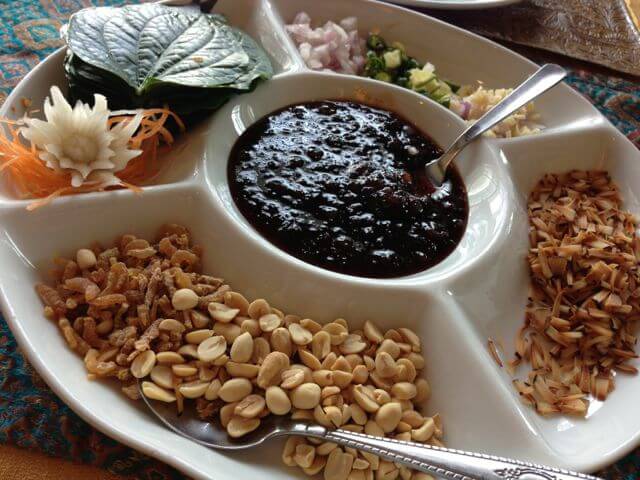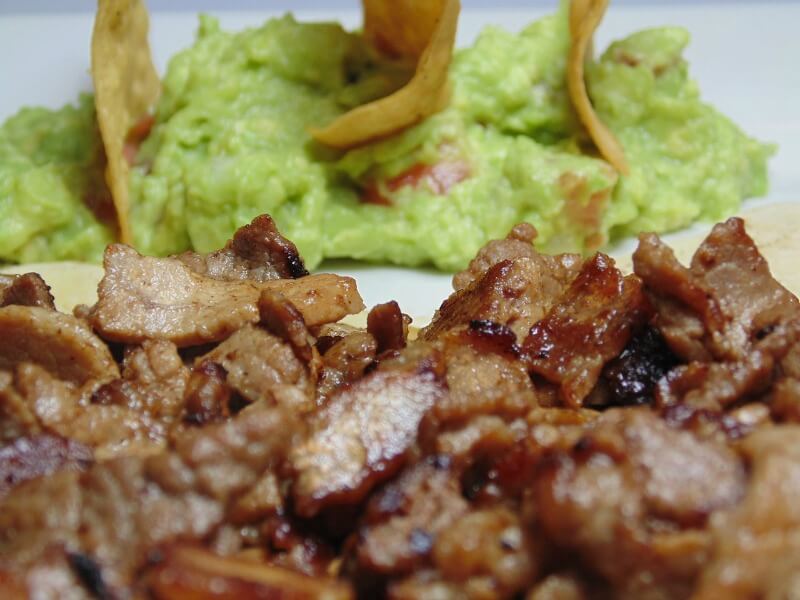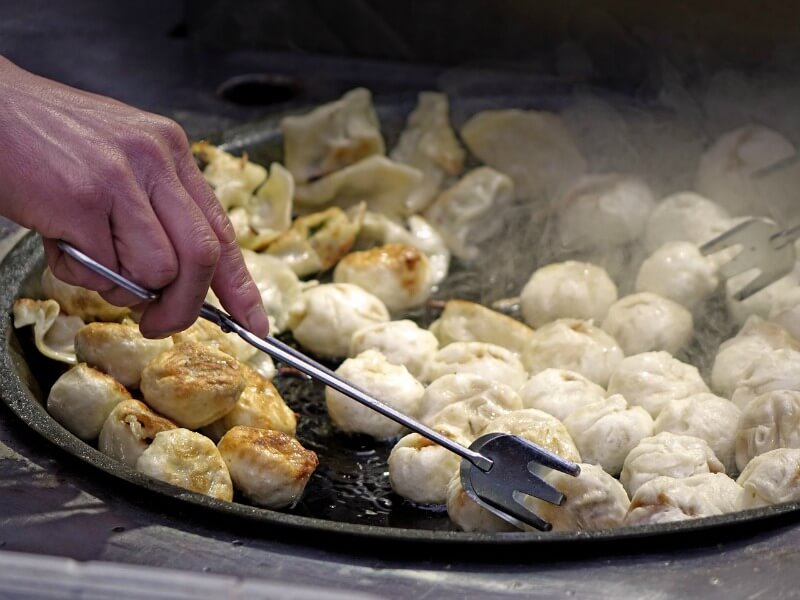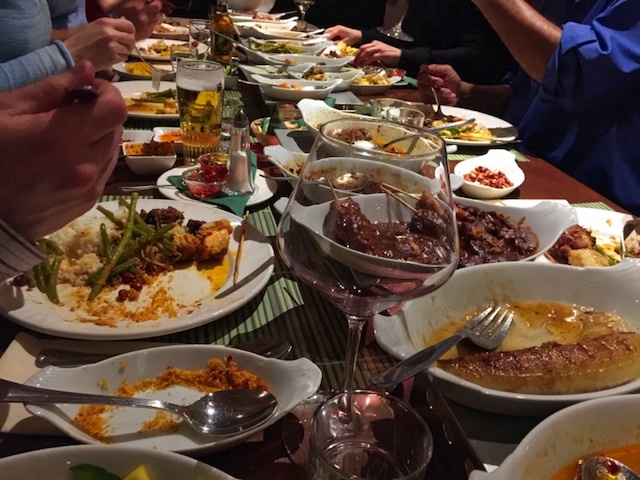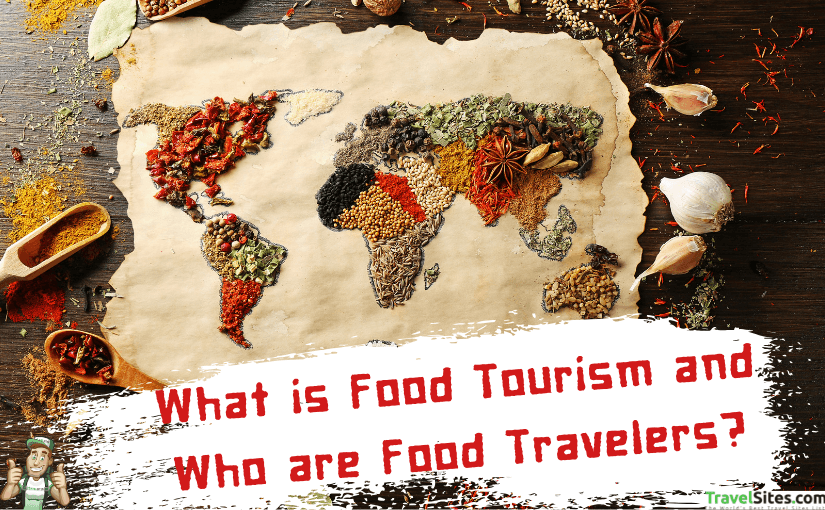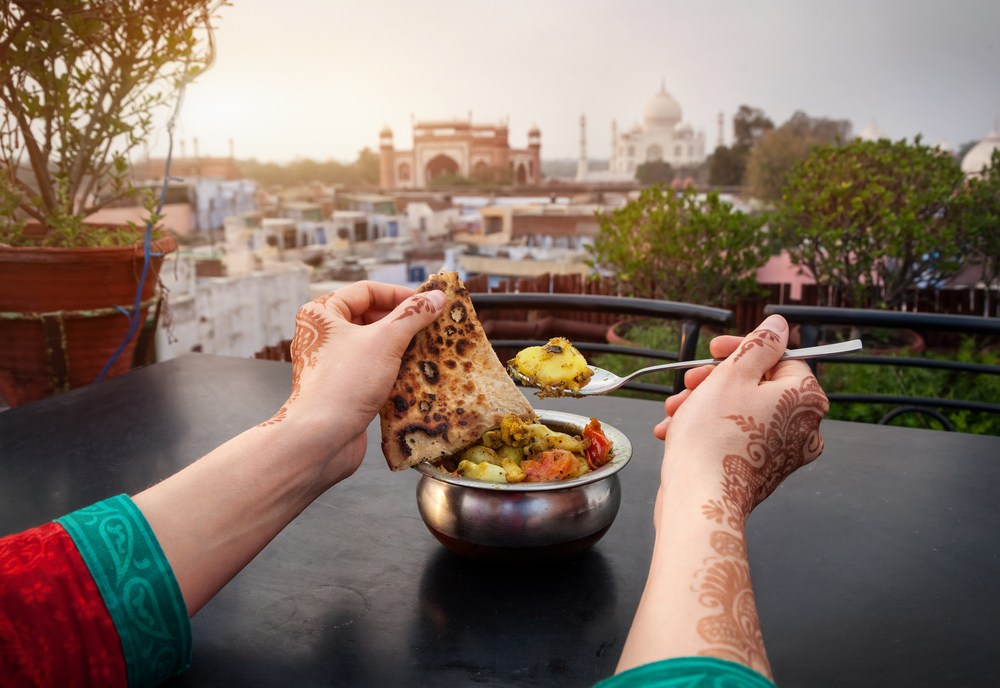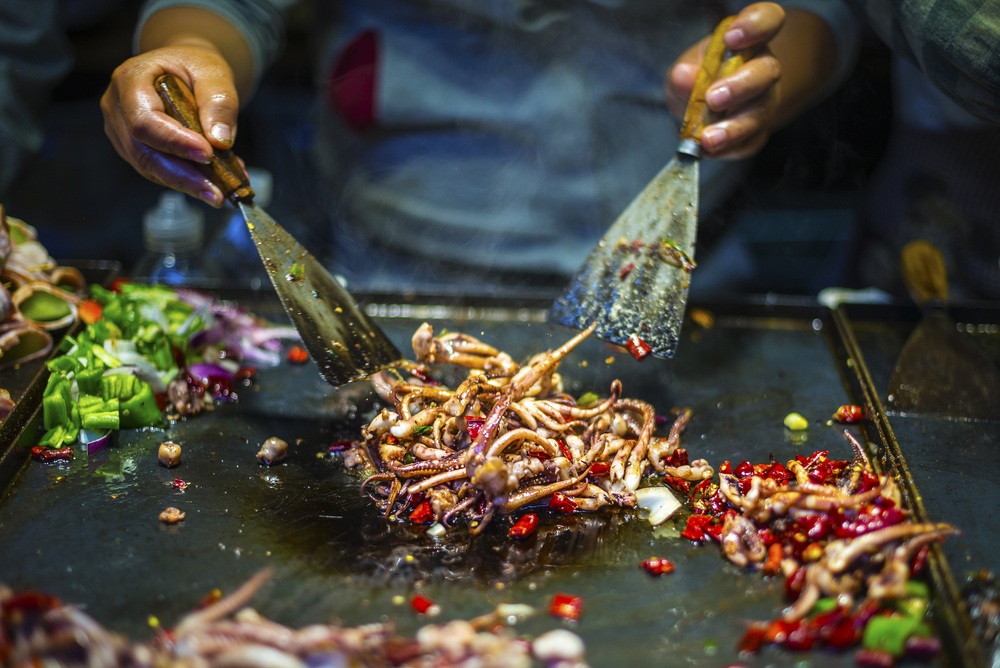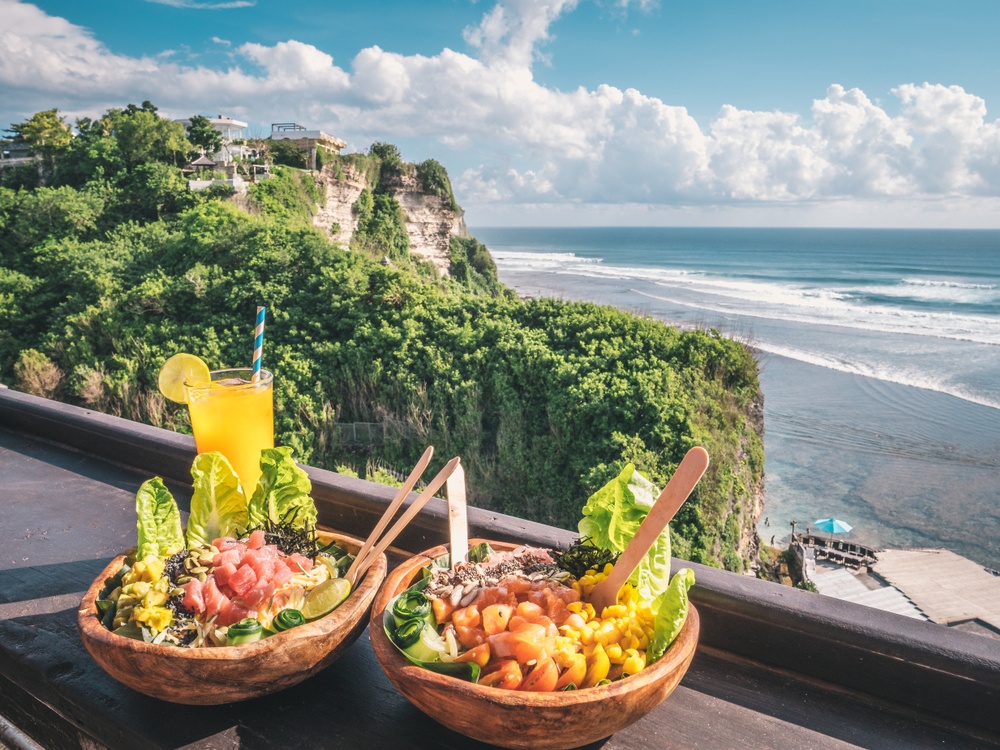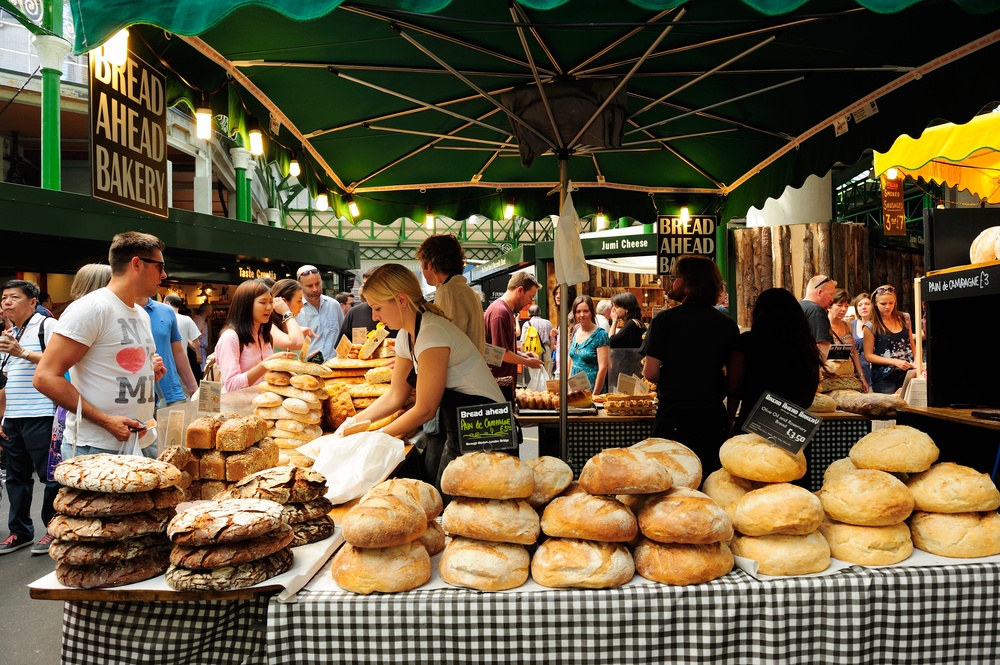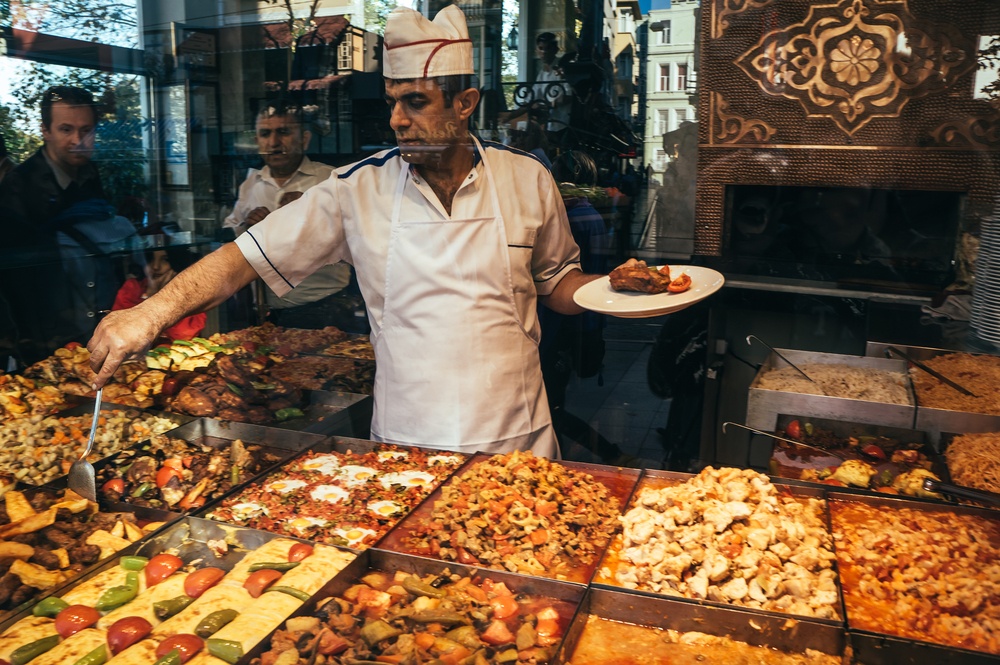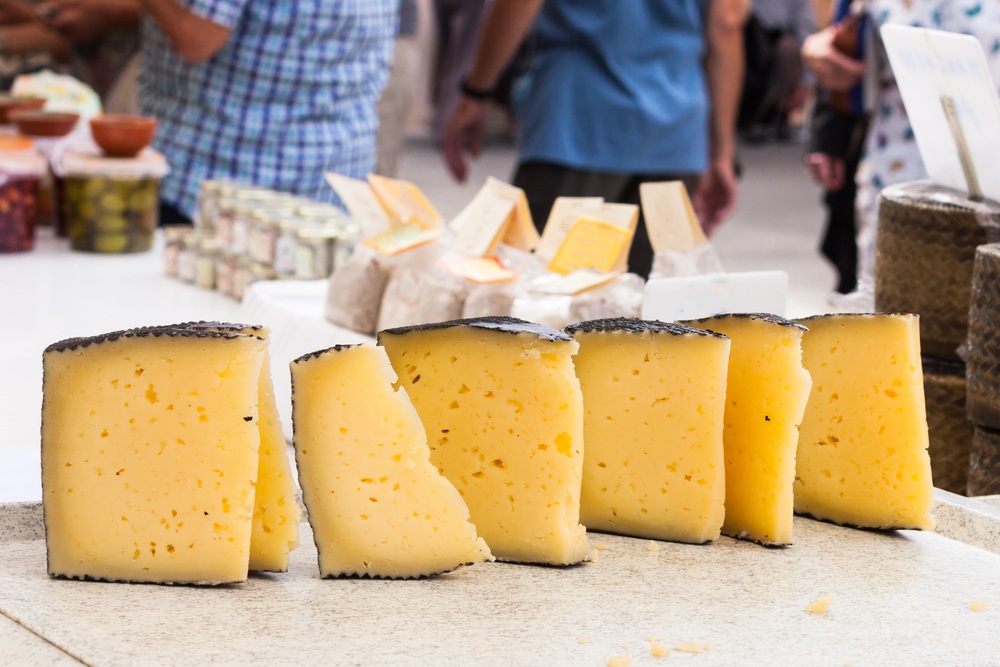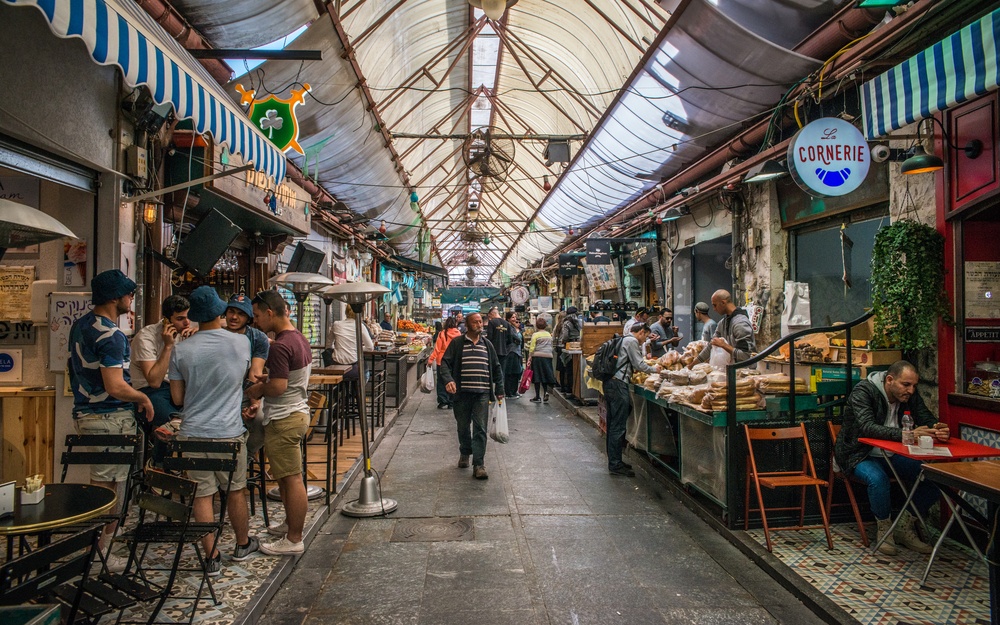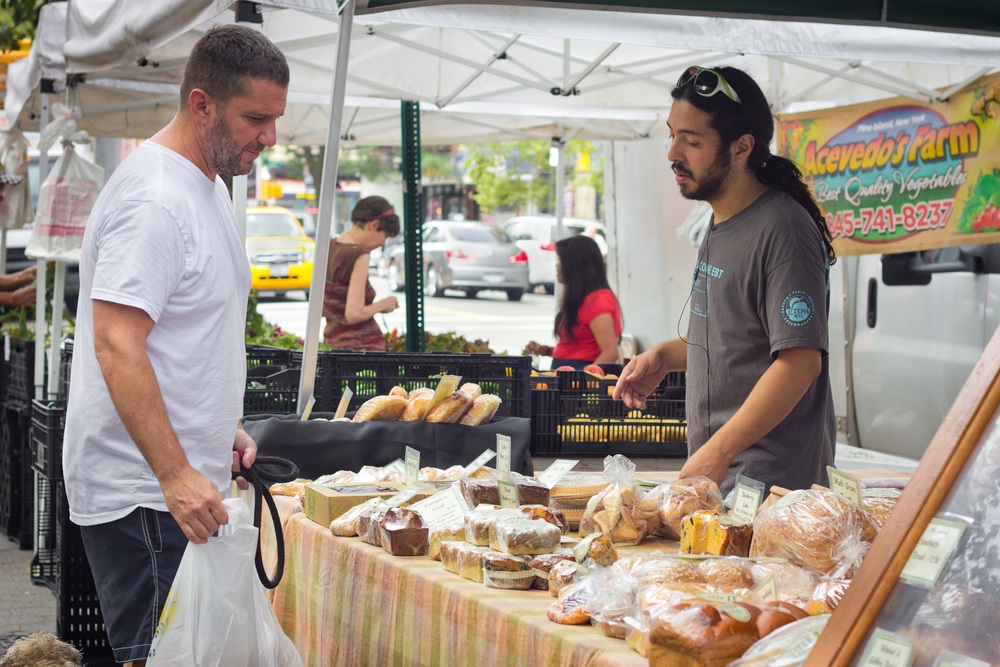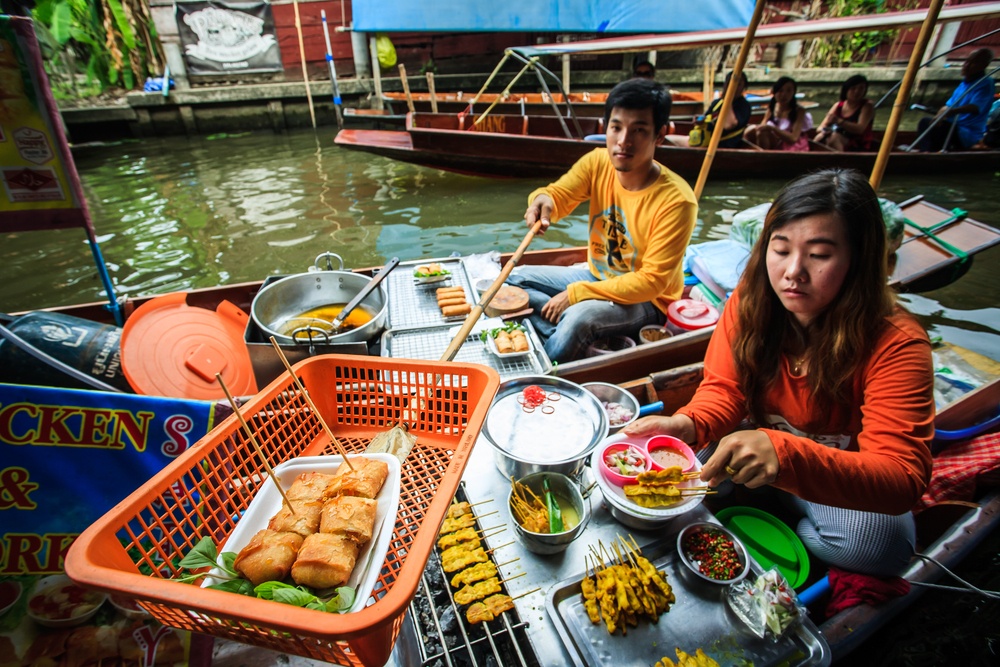What is food tourism
What is food tourism
Food Tourism: The Impact of Food TV Shows on Local Industries
The widespread popularity of food television programs and related social media have impacted local industries, and have become a catalyst for the increase in food tourism. Consequently, the demand for professionals with experience in hospitality is on the rise. This increasing demand comes from various sources, including companies in the food and beverage industry as well as local and national governments that are looking to promote food tourism.
What Is Food Tourism?
Food tourism, also referred to as culinary tourism and gastronomy tourism, is engaged in by individuals who seek out culinary experiences to broaden their understanding of a culture or lifestyle while traveling. Food tourists embark on tours that not only expand their palate, but afford them the education to identify the link between food and local customs. They search for authentic culinary experiences that expose them to new tastes, textures and traditions.
From 2012 to 2018, food tourism entered the mainstream with the help of social media platforms and food television programs featuring world-renowned chefs, restaurants and events. Food tourism evolved into an experiential industry that included festivals, wine tastings and other personalized offerings, as well as the advent of food-tourism companies.
According to Robin Back of the University of Central Florida’s Rosen College of Hospitality Management, food tourists “pursue activities where authentic culinary and other food and beverage-related activities are the primary motivator for travel. Such activities may include visits to local producers, restaurants, food festivals, markets, wineries, distilleries, and breweries” to embrace an authentic cultural experience. According to the WFTA, 63% of millennials search for restaurants that are socially responsible. The association also recognizes that a majority of food tourists want an “eclectic and authentic experience.” Moreover, 40% of tourists spend their money on food tourism according to the 2019 president, Roi Correa, of FIBEGA, an internationally recognized gastronomy tourism fair.
Social media is incredibly popular among millennials and Generation Z, and they utilize social media platforms such as Facebook, Instagram and YouTube to document their experiences. In turn, marketing departments of food and beverage companies can leverage social influencers to promote their restaurants, products or food festivals. This exposure provides a mass audience for organizations that translates into profit.
According to the WFTA, the top four food-travel activities are: eating at gourmet restaurants, dining at a famous bar/restaurant, enjoying street food, and enjoying an overall remarkable dining experience. The Journal of Gastronomy Studies reports that food tourists obtain information about gastronomic destinations mostly through television programs that feature chefs and gastronomists.
TV programs are a powerful tool that have the ability to promote destinations and can influence tourists to flock to featured restaurants. As an example, the late Anthony Bourdain’s television show Parts Unknown exposed American audiences to unfamiliar places and unique culinary experiences. His program was able to connect American audiences to a country’s culture through the lens of food tourism. Another example is the Netflix cable show Chef’s Table that exposed a global audience to food as an art form.
Top Chef on Bravo is a reality competition show that pits chefs against each other. Its season 15 premiere attracted over 2 million viewers. The show has such an influence on food tourism that the media has created the term: “Top Chef Effect.” Various cooking shows on the Food Network by world-renowned chefs such as Bobby Flay, Rachael Ray and Sandra Lee continue to contribute to food tourism.
The Impact of Food Tourism on Local Communities
The impact of food tourism can be beneficial to the growth of a local economy. However, there are downsides to food tourism that can challenge a community and destroy its cultural heritage in the search for profits.
According to Back, “A growing number of destinations are promoting their cuisine as a core tourism product. This is particularly relevant to destinations with well-known cuisines as well as wine-producing regions, where fine wine and fine food frequently go hand-in-hand.” Yet, it is important that food tourism is sustainable and retains a destination’s cultural identity. Those pursuing a career in hospitality must develop the skills and knowledge to balance the benefits of food tourism while limiting its potential negative drawbacks.
Some communities can face loss of cultural identity, because the local economy has transitioned to supporting the needs of tourists. Restaurants may begin to refrain from serving local cuisine and change menus to suit the culinary needs of tourists. In some cases, the influx of tourists can drive up the prices of goods and services, which forces many locals out of their communities, thus destroying a community’s unique character.
Hospitality and Food Tourism Management
To mitigate and help avoid the negative effects of food tourism, it is crucial that local governments and businesses hire knowledgeable professionals in hospitality and management positions. Food tourists want to participate in culinary experiences that embody and celebrate the heritage of local communities. Those pursuing managerial positions in hospitality and tourism have the opportunity to educate food tourists and help them enjoy a culinary-centric vacation, while also minimizing the negative impact on local communities.
The COVID-19 pandemic has forced the food-tourism industry to discover new ways of offering innovative food-tourism experiences. Now more than ever, hospitality professionals need to ensure a safe environment for tourists to experience culinary adventures. Moreover, professionals with knowledge of technology and social media can provide food tourists with the convenience of virtually exploring wineries, distilleries and culinary destinations. As food tourism continues to change, hospitality and tourism management professionals have the unique opportunity to be a critical part of an evolving industry.
Prepare for a Career in Hospitality and Tourism
Those looking for a career in food tourism would do well to pursue a college degree. The bachelor’s online restaurant management and hospitality degree programs at the University of Central Florida are designed to help students pursue careers in restaurant and foodservice management and hospitality management. UCF offers a variety of online degree options — bachelor’s, master’s and graduate certificates — as well as multiple food-centered electives.
At the graduate level, a certificate in Event Management offers students the knowledge and skill set to effectively organize private and public events. A certificate in Destination Marketing and Management prepares students to understand the economic and socio-cultural impact that tourism has on a local community. This certificate also equips students with the skills to efficiently execute marketing campaigns.
UCF’s MS in Hospitality and Tourism Management program prepares students to pursue leadership positions throughout the industry. It also teaches the skills to analyze and implement strategic marketing and financial planning to help an organization reach its financial goals.
To highlight, UCF offers a Bachelor of Science in Restaurant and Foodservice Management that prepares students with the unique opportunity to work with professors who are skilled experts in the industry. The program teaches students the managerial and business skills essential for leadership roles in the restaurant and food-service industry. The program also offers a unique opportunity for students to get hands on experience by participating in paid internships. UCF Rosen College has entered into an exclusive partnership with LongHorn Steakhouse of Darden Restaurants to offer Restaurant and Foodservice Management students a three-semester progressive internship that encompasses kitchen-operations training, dining room operations training and manager training.
Learn more about how UCF’s online hospitality degree programs can help students pursue careers in hospitality and tourism — and become the future leaders of their industry.
What is a food tour and how to choose the best one
If something really distinguishes a trip, it is getting a taste of local life. The feeling of knowing places that only the locals frequent and delicious restaurants that are usually off the tourist route and therefore go unnoticed by the eyes of outsiders.
These discoveries make any trip an authentic journey into the local culture. It is pure excitement and undoubtedly one of the best ways to learn about a destination.
The thing is that we don’t always know someone to be our local guide. Even when we have friends at the destination, we should not expect that they know all the stories, traditions, and the best places to eat and drink in the region. That is why we love to go on food tours!
Taking a food tour is having an expert by your side to help you explore the city in the most tasteful and informative way possible. A complete experience with taste, scents, knowledge, and memories!
This article explains what a food tour is and how to choose the best one for your itinerary.
What is a Food Tour
A Food Tour, also known as Culinary Tour, is a guided tour designed to introduce you to the history and traditions of a people through their food culture.
A Food and Drink Tour includes food and beverage tastings related to a theme. It can be about the local culture or a specific region of the city, for example, street foods or typical items from the Municipal Market.
Of course, enjoying the food and drinks included in the tour is the central point of a food tour, but there is more than that. A food tour involves a mix of history, context, and flavors. The culinary experience becomes a means to explore the destination. Between bites, the guide shares information about local traditions, sightseeing spots, etc.
Most common examples of Food Tours:
The tours can be private or in groups. In general, it takes 2 to 4 hours with stops for tasting in various gastronomic establishments (restaurants, stores, markets, cafes, etc.). Food tours are usually done on foot, but you can also find tours by bicycle, tuk-tuk, scooters, and other means of transportation.
The most common types of food tours can involve:
Who are the Food Tours for
Food Tours are eclectic tours that satisfy the hunger and curiosity of a wide variety of travelers. For those traveling alone, taking a shared group tour is a great way to meet people during a trip. However, if you are traveling with friends, hiring a private tour is guaranteed fun. Families with children also love food tours, but in this case, it is important to find out in advance if the tour is suitable.
If you are a foodie and have never been on a food tour, you should add this type of activity to the top of your itinerary. Now, even if food is not your primary motivation, but you love to get to know the culture and history of destinations, taking a food tour is an enriching experience. That is because the cuisine and food traditions are based on historical influences and reflect the uniqueness of the environment.
And of course, for those who are professionals in gastronomy, culinary tours are an excellent opportunity to improve techniques and knowledge about typical dishes and foods.
Why take a Food Tour
Besides learning about the history and culture of the place, there are many reasons why you should take a food tour on your next trip:
How to find a Food Tour
With the boom in food tourism, you can find food tours in many cities worldwide. That is very good, but it also poses a challenge when choosing which is best for your itinerary.
To make your travel planning easier, we’ve been carefully curating amazing culinary experiences to offer in our Food Tourism Marketplace, including food tours.
You will find a selection of the best food tours in many different countries, and the list will just keep on growing. There, you can search for the experiences by destinations, see if it meets your needs, and make a reservation.
Food Tourism: How Culinary Travel Is Winning The World
Do you ever find that the smell of local foods is one of your strongest travel memories?
When I think of South Africa I smell grilled BBQ, with Naples I smell pizza crust and in France freshly-baked croissants from the boulangerie down the street.
Bangkok? Durian, I’m afraid… but also the bubbling curries of street stalls.
I find that food is one of the best ways to experience a culture, and food tourism, which is also called gastronomic tourism, culinary tourism or travel and even foodie tourism, is a growing travel trend – and even passion.
FOOD TOURISM AROUND THE WORLD: HOW TO COMBINE FOOD AND TRAVEL
When I’m planning a trip (most of my trips are food-related to some extent) here’s how I make sure I have the most delectable experience possible:
I love cooking (despite the occasional burnt offering) but a major part of any travel adventure is eating wonderful foods I haven’t cooked myself.
The advent of celebrity chefs and food and travel blogs, the proliferation of cooking shows and the Food Network (not to mention the stupendous late Anthony Bourdain, who turned food and travel into a passion for many of us) ― all these help promote the discovery of new foods, making culinary vacations more popular than ever.
The Food Travel Monitor (a global study by the World Food Travel Association) says an unbelievable 95% of American travelers are interested “in some kind of unique food experience“. I can only believe that these food tourism statistics are at least that high for travelers from other countries.
The search is on for new experiences, especially for something that tastes like a true slice of local culture. And what can be closer to a culture than the way it eats? A foodie trip is cultural travel at its best.
So… is Chinese food in Shanghai the same as you know it at home? Is your ‘authentic’ Thai corner eatery really authentic? Your food holidays should have the answer.
Culinary tourism definition – or what is food tourism?
“Culinary Tourism includes culinary experiences of all kinds. It’s much more than dining guides and restaurant weeks. It encompasses cooking schools, cookbook and kitchen gadget stores, culinary tours and tour leaders, culinary media and guidebooks, caterers, wineries, breweries, distilleries, food growers and manufacturers, culinary attractions and more. Authenticity is also of critical importance to culinary tourists.”
– International Culinary Tourism Association
…”a trip to a gastronomic region, for recreational or entertainment purposes, which include visits to primary and secondary producers of food, gastronomic festivals, food fairs, events, farmers’ markets, cooking shows and demonstrations, tastings of quality food products or any tourism activity related to food.”
– World Tourism Organization
TOURISM AND GASTRONOMY, AND WHY ONE IS SO IMPORTANT TO THE OTHER
The more we travel, the more sophisticated we become ― and the more we need to experience a destination rather than simply see it. Gastronomic travel provides a perfect window for that experience.
Even if gastronomy isn’t the main reason for a trip, it often plays a key role. When you start plotting and planning what you’ll eat where, you are engaging in some sort of foodie or gastronomic travel.
Often, people interested in food and travel look for the best foodie destinations ― those with a reputation for good products, well prepared.
There are a growing number of culinary tourism destinations but I can’t list them all so… here are a few of my faves:
Italian cuisine: Whether for risotto or ossobucco from Milan, fegato from Venice, the pastas, the cheeses, the truffles, the vegetables, the oil, the fresh fish, the ice cream… oh, the gelato!
And shop after shop of hanging sausages, stacked cheeses and other delicious products.
While most people go to Milan for the fashion, I go for risotto and to stock up on carnaroli rice (like arborio only creamier), good pasta, olive oil and bottles of Crodino for the winter.
Risotto is a rice dish that is anything but light, so it’s more of a fall or winter comfort food. This is partly because of the natural creaminess of the rice, of course, but also because of the butter and cheese that are liberally mixed into it.
Cooking from Provence, which locals call the cuisine du soleil et du coeur ― cuisine of the sun and heart. It is sun-drenched and bursting with freshness, from the well-seasoned bouillabaisse fish soup to the simple ratatouille (the best result is achieved by cooking each vegetable separately). Good French cooking (and yes, there is most certainly such a thing as bad French food) is among the most sublime on earth. Above is one of my favorites: fruits confits, or candied fruit.
Speaking of French food, many people make a face when I mention Lyon’s frogs’ legs and escargots. They require slightly cooler weather and come fall, I hop on the train for an hour to visit my favorite food mall in France, the Halles Paul Bocuse.
New York’s diverse heritage makes it a food mecca, with successive waves of immigrants contributing their cuisine to the mix, from foot-high pastrami sandwiches to lox and bagels (although Montreal gives it a run for its money on smoked meat and bagels!) New York has wonderful, healthy and varied foods ― but once in a while, when I need comfort food, this is what I get.
Middle Eastern food is hugely popular, whether from Lebanon, Egypt or Turkey. Greece isn’t far from that neighborhood either ― from mezze, those bite-sized starters, to the grills and fresh vegetables and cumin-flavored delights of any good table, all rounded off with baklava or similarly addictive pastries.
And let’s not forget stuffed vine leaves, tabouleh, hummus, babaghanoush, feta… When traveling through the Middle East I inevitably gain weight ― I don’t know what to eat, or what not to eat, so I eat it all.
I love Turkish food under any circumstance; like baklava, for instance – that feathery pastry gooey with honey, filled to the brim with chopped walnuts or pistachios. It is often sold by the tray load in pastry shops but when you go for coffee, you can order a single one – and one will be more than enough. Or these sweet round pastries whose name I don’t know – they look like churros but are drenched in honey!
To me, spicy food means Thailand, where I lived for two years. The more I ate it the spicier I liked it. Thai food is incredibly rich and textured, with tastes ranging from sweet to salty to sour to spicy all in a single bite. Much of this comes from the influence of neighbors like Burma, Malaysia, and China.
Miangkham, a traditionally pre-prepared Thai delicacy sold on the street, is also a staple of good restaurants now. But in Thailand, street food still reigns!
For foodie tourism with heat, those of you with a robust palate should head to Mexico for chocolate-based mole sauce and ceviche, of course, but also for more unusual fare. In Oaxaca, you can brave the chapulines ― deep-fried grasshoppers with garlic and lemon (I said you, not me!)
Mexico’s regions each have their own cuisines, from the northern meat-based meals to Yucatan’s spicier, more Caribbean-tasting dishes, but they never fail to impress me.
Sushi, sushi! I have had the fortune of spending a bit of time in Japan, long enough to sample Japanese cuisine at its most elemental. Japanese food exports well so chances are there’s an authentic sushi or tempura or steak house near you but… you haven’t tried fresh sushi until you’ve bought it either at the fish market or in the basement of any major Japanese department store
Madrid’s mercados are as much about the eating experience as about the shopping. I try to visit Madrid each year and I go with an open mind, but as soon as I enter the Mercado San Miguel, there’s a jamón stall on the right that grabs me and simply won’t let me go.
The artists who slice this ham of hams do so by hand and manage to produce unbroken slices as thin as paper.
Tapas may well be my favorite type of meal – hop from bar to bar and munch along. Even paella comes tapas-sized!
Of course, there’s extraordinary cuisine in many other countries: Peru is an acknowledged food tourism destination; Caribbean cuisine has a perkiness all its own; Brazil’s feijoada and Argentina’s steaks can be memorable; North Africa is the place for tagines, briks and couscous; and China has thousands of dishes you’ve never even heard of (except for the above dumplings ― which I’m sure you HAVE heard of).
BORROWED TRADITIONS: WHERE FOOD TRAVEL AND HISTORY CONVERGE
The Fascinating Story of the Indonesian Rijsttafel
The Indonesian rijsttafel isn’t Indonesian at all: it is a Dutch invention.
Indonesian food is involved, of course, but the construct is a product of colonial Holland, which ruled Indonesia – calling it the Dutch East Indies – for more than 350 years.
Because yes, initially the Dutch colonists avoided the sweet and pungent local dishes, preferring to import their own fruit trees and bushes and seeds and even livestock.
This was initially a male-only duty station of plantation managers and government administrators whose families stayed back home. Over time the men grew accustomed to the foods prepared by the single ladies who cared for their culinary – and other – needs.
But then something happened that would change food (not to mention world) history: the Suez Canal opened.
Once unable to undertake the lengthy journey and face the dangers of an unknown land, families began heading for the colonies and wives joined their husbands, bringing along their native foods and re-injecting these into local eating habits.
Many Dutch food imports were shipped in tins, with weeks of sultry unrefrigerated transport adding the threat of botulism to the then-blandness of northern European cuisine.
As did their husbands before them, the women began incorporating ingredients and techniques from both homespun and indigenous cuisines into their cooking, guided by their local cooks.
The result of this clash of culinary cultures was an Indo-Dutch medley that outstripped either of its component parts and may well be the world’s first fusion cuisine.
The Dutch loved it.
The Maluku Islands, part of the archipelago, had already given the world most of its nutmeg, cloves and black pepper. Indonesia had already hosted, willingly or not, immigrant waves of Chinese, Arabs, Indians and Portuguese, all of whom left their imprint on food. The inescapable diversity of the country’s own thousands of inhabited islands made sure ‘boring’ would never be used to describe the food.
Dishes from all these cultures found a home.
In a land of local poverty, the most vivid social demonstration of colonial power and omnipotence was a heaving, superbly garnished table – the rijsttafel, or rice table, mountains of rice surrounded by a multitude of small, delectable dishes. Of course it was also a great excuse for a party.
A traditional Indonesian rijsttafel
The rijsttafel was a formal affair with a Dutch family seated around a table. I can imagine their faces, red from the humidity, dripping with moisture. When a fly landed inopportunely, a sigh would rise and a languid arm, heavy with heat, would wave the intruder away. Local jongos, or male servants, would buzz about barefooted, carrying spicy dishes ranging from hot-hot sambal sauces to sweet and cloying peanut satehs. Just another day in the tropics.
The ‘feast’ usually included around 40 dishes. Some went beyond the call of duty. The famous French-run Hotel des Indes in Batavia, Jakarta’s colonial name, boasted as many as 60 different for Sunday lunch. Some private regal feasts could ring up 100 dishes or more, served ‘Dutch-style’, each dish on its own plate, and sometimes followed by steak, with the rijsttafel an immense appetizer.
On a recent trip to Amsterdam, I was asked what kind of Dutch food I wanted to taste.
I answered immediately: “Rijsttafel!”
Other than the barefoot waiters, it may not have changed much.
The table was already set with sambals, condiments and sauces when we arrived. Along came the rice – huge mounds of it – and the many courses, seemingly pell-mell, all deposited on a line of hot plates. Platters kept arriving and I stopped keeping track, but a few, apparently staples, were memorable.
The snacker in me dove for the crunchy, crispy prawn crackers, or kroepoek, so airy they stick to the roof of your mouth, and the sateh, that luscious spicy peanut sauce slathered over skewers of barbecued chicken, begging you to lick the plate clean (I withstood the temptation). My favorite was beef rendang, whose caramelized coconut sauce was an experience sensuous beyond taste.
An unusual reverse migration was responsible for elevating rijsttafel‘s popularity in Holland.
As 19th-century transport links improved, Dutch tourists set sail for the colonies. They fell in love with the rijsttafel experience, food, waiters and all, and began taking the cuisine home with them. When colonial administrations rotated, recipes were brought back to Europe and handed down from mother to daughter, some closely guarded still today.
When the Dutch finally left Indonesia in 1949, the rijsttafel left with them, not only because the food was extraordinary but because, like most former colonial powers, a certain nostalgia set in. Subsequent waves of Indonesian immigrants cemented the fusion, sensing opportunity and opening the first rijsttafel restaurants in metropolitan Holland.
It may now be a favorite Dutch specialty but in Indonesia, resentment towards the former colonial power initially pushed locals away from this form of eating. Purely national ingredients and etiquette became symbols of independence and sovereignty. That resentment has eased and today this feast is found in many Indonesian tourist destinations.
It’s not uncommon for foreigners to look for an ‘authentic rijsttafel’ in Indonesia – whereas to get the real thing, they’d best travel back to Amsterdam.
CULINARY EXPERIENCES DON’T ONLY HAPPEN IN RESTAURANTS
One of the most common foodie finds will be a restaurant – big or small, modest or luxurious, street stall or in luxurious surroundings.
Whether you’re experiencing Noma for the first time (I haven’t yet) or chasing the best burger in the city, a sit-down meal is a central part of food tourism.
Central, yes, but not the only culinary tourism experience.
Eat with a local! The growing number of social dining networks make it easy to find a chef or cook who will host you for a meal at a reasonable price.
Another great experience is to dine with locals. Plenty of organizations are popping up in cities around the world to match up travelers with locals. EatWith, the world’s largest such network, has 25,000 hosts in more than 130 countries! Enjoy good company along with good food and gain a better understanding of your host culture.
Street food can be extraordinary. Food tourism in places like Thailand or Mexico means superlative street food ― I just find it more varied, tastier and fresher than anything you’ll find sitting down within four walls.
You can visit a market, many of which provide far more than produce. The Mercado San Miguel in Madrid, for example, is designed around an eating experience, not just shopping.
And while we’re on the subject of Spain, you can also eat in a bar ― that’s usually where you have tapas, just like in the UK you can eat in a pub.
One activity I enjoy when I travel is visiting a local supermarket. Foods are often different and I’ll get ideas ― and inspiration. Just step into a supermarket in Japan and you’ll immediately understand what I mean.
A small supermarket or grocery store is also the best place to grab some local cheese, cold cuts and spreads for that all-important picnic along the Seine in Paris…
TIPS FOR A GREAT FOOD TOURISM EXPERIENCE
With the growing popularity of food travel, be cautious about the quality of what you get. As with everything else, popularity may breed contempt.
Try to fit in one tour guided by a local. There are many wonderful tours and classes led by expats or long-term residents, but travel is also about coming into contact with the local culture so don’t let that dimension pass you by.
Don’t just be an onlooker. I’ve attended classes where one student stood at the front preparing everything while the others watched. You need to get your own hands wet and taste your own meal if you’re ever going to understand exactly what went into preparing it.
Try different courses. Some places are known for starters ― tapas and mezze for example ― while others are known for stews or desserts. Focus each meal on a different course.
Avoid asking for ingredient changes unless you’re truly allergic or despise something ― especially in places where you know the chef pours her heart into her art. Each ingredient has its place and it’s the package that makes the experience a marvelously balanced one.
Reserve or at least call ahead, especially if you have your heart set on eating in a specific place. I’ve at times been disappointed to find a place full, closed or otherwise unavailable. Your hotel desk can make the call if you don’t speak the language!
Remember that food tourism includes drinks. Wine, of course, but I’m thinking chocolate con churros in Spain or Turkish coffee, as specialized as the food.
Check for cleanliness because standards differ. If things are a little messier than you’re used to, that doesn’t mean you’re facing a health emergency. Still, keep an eye on hygiene.
Don’t be afraid of street food. If it’s cooked freshly, cleanly, at high heat right in front of you, it will be as safe as anything else you eat, possibly even safer than hotel food that may have skipped a step in the cold chain.
Beware the much-translated menu. This isn’t always the case but I’ve found that a menu translated into a dozen languages screams ‘tourist trap’ and while I know they’re not all bad, I’d rather eat where mostly locals go.
Buy a local cookbook before you leave, along with a few special spices or condiments. Wrap these well in foil and plastic or your clothes may smell of coriander for weeks (and get the airport sniffy dogs all excited).
Look for variety in a food tour, course or experience. This Istanbul food tour had me sample more than two dozen dishes over two continents (and I loved it so much I retraced my steps on my own the next day). I also think you’d enjoy this Lisbon food tour. There are plenty of food tours in just about any city if you’re hungry, and I admit being guided around a city’s best foods is one of my favorite activities.
HOW DO YOU KNOW IF YOU’RE A FOOD TOURIST?
Well, let’s see… do you recognize yourself here?
I’VE BEEN ON A WORLD TOUR – NOW WHAT CAN I BRING HOME WITH ME?
Admit it. Each time you nibble that cheese in a French farmers’ market or let some prosciutto melt in your mouth, you’re really thinking: “I wish I could take some home with me!”
Sometimes you can.
Each country has its own list of what’s permissible, and some are surprisingly liberal.
The US, for example, seems to have radically liberalized its rules about what can come in and it allows all sorts of foods – cheese, cooked meats, spices, even fruit, which certainly wasn’t the case when Deputy Beagle barked at my illegal apple at Dulles Airport in Washington DC a few years ago and caused me great public embarrassment.
Here are some of key “I want to bring it home” listings for Australia (seems like the strictest), Canada, New Zealand, UK and USA.
FOOD TOURISM RESOURCES
— Originally published on 11 November 2011
Food Tourism, a tasty way to travel
Food tourism is a relatively new term, but there are already several definitions to describe it. In the same context, it is also common to find the terms Culinary Tourism and Gastronomy Tourism.
At Food’n Road, we define Food Tourism as activities that provide experiences of consumption and appreciation of food and beverages, presented in such a way that values the history, the culture, and the environment of a particular region.
Explore the cuisine beyond the plate
Exploring different cuisines has always been associated with moments of leisure and travel, but the concept of food tourism has recently evolved to encompass activities beyond the plate. These are tourist and entertainment activities that place culinary traditions as a pillar of regional identity and cultural heritage and value the relationship between food and society.
And this change is great, as it creates the possibility for people to approach food at different levels of the value chain and learn from those who produce it. In this way, it is possible to expand economic development to different layers of society and offer more personal and authentic experiences to the traveler.

Activities of Food Tourism
Food tourism is much more than a list of restaurants or only high-cost activities with refined gourmet perception. It is also not focused only on agritourism. Nor does it require distant travels. It is related to all activities that use food as a means of connection between people, places, and time.
Food tourism is composed of activities that provide experiences of consumption and appreciation of food and beverages, presented in such a way that values the history, the culture, and the environment of a particular region.
Examples of Food Tourism activities:
The list is huge, and there are several models of gastronomy-related activities. It is a creative market because it embraces different representatives of the food, beverage, and hospitality industry. We are talking about: restaurants, farms, markets, artisan producers, hotels and hostels, street food vendors, chefs, galleries, and everything related.
What are the benefits of Food Tourism and why we support it!
Food tourism with a focus on cultural immersion is a strong ally for economic and social development, in addition to being unique and memorable for the traveler.
When done in the right way, food tourism, built together with the local community and respecting its identity, is a tool for changing two scenarios: the negative impacts of tourism (we explain better below) and the detachment between people and real food.
Food Tourism is related to all activities that use food as a means of connection between people, places and time.
Tourism is not always associated with sustainable development. Many destinations are experiencing difficulties with regional and seasonal asymmetries. In other cases, local communities have been affected by massive tourism through gentrification, rising prices, and often attracting tourists with little awareness of their behavior and demands on the local community.
The scenario is quite different with a type of tourism that motivates people to know the countryside, diversified with food seasonality, and attracting people who seek to understand and relate in a more personal and respectful way to the local culture.
To strengthen this type of tourism, is it necessary to connect people in a more integrated way with the destination, and food does it very well!
At Food’n Road, we want to be agents of change, engage people to reflect about food beyond the plate, and contribute to responsible tourism development. We believe that every reflection starts with reliable information and is intensified with good experiences. Thus, food tourism is an excellent tool to initiate this change.
Did you like the idea? So find out now how to make a Food Trip!

What is Food Tourism and Who are Food Travelers?
When you travel, what aspects of the experience make you feel closer to the culture and environment in the local area that you’re trying to explore? Is it the scenery? The people you meet? The adventures and attractions they offer? While all of these might factor into how well you understand the unique culture of your destination, the food you eat will be of particular importance.
These days, there are countless travel bloggers, influencers, and enthusiasts that center on the aspect of food tourism. As a rapidly growing endeavor in the world of travel, food tourism is a special pursuit of certain activities that help bring a person closer to a culture by way of their food.
Defining Food Tourism
Back in the day, people would travel to unwind, relax, and take a break from reality. Sure, these objectives still exist today and some people still fly out to far off destinations just to be able to say that they got away from it all. But now more than ever, travelers are becoming less relaxed and more aggressive when it comes to their travel experiences. More and more people head out in search of discovery and adventure instead of the want to take a break from everyday life.
The modern-day traveler will tell you that 5-star hotels and lavish top-tier restaurants are all well and good, but to really get to the heart of a culture, it would be wise to take the road less traveled and trek into the local community. Here, you’ll find locals with their handcrafted wares and homecooked food that more accurately represent the ideas, traditions, practices, and culture of the locale.
So in that sense, food tourism isn’t about visiting posh restaurants or sampling dishes at fusion cafes. It’s about enjoying food and beverage that pay homage to the history, culture, and traditions of a local community. It’s traveling by way of food. It’s the discovery of a destinations unique personality by way of exploring the kind of food that they have.
How Does Food Tourism Happen?
Technical, complicated definitions of the scope and range of food tourism are constantly being debated. But one thing’s for sure – food tourism isn’t a calculated activity. It doesn’t require a big budget, you don’t need to make reservations at some fancy hotel, and you definitely don’t need to maintain your focus on a specific dining experience or type of food.
Whether or not you know it, you’ve probably been a food tourist at some point in your life. There are lots of ways that food tourism can happen, and these can include:
Why We Need to Support It
There’s nothing wrong with wanting to try well-known restaurants or even 5-star establishments even if they don’t reflect the culture of the area you’re in. But if you really want to support food tourism, then it would be best to seek out the inner core of the local culinary scene where you’ll find the roots of the destination’s culture.
Boosting the Local Economy
If someone were to visit your hometown and ask you where they could get food that truly encapsulated what it meant to be a local, would you point them in the direction of the nearest McDonald’s? Probably not.
To sample culture through food means visiting establishments where locals prepare food for locals. That includes small kiosks, marketplace stands, street food vendors, and other smaller establishments where their target market isn’t necessarily tourists. Because these places will cater to locals, they’ll typically offer budget-conscious choices featuring the local cuisine.
But aside from offering truly authentic local food, there’s another reason why these establishments are worth supporting. Run by families and small business owners, small local restaurants, food stalls, and kiosks are operated with the purpose of fueling everyday life. When you support these establishments, you can be sure that your money is being funneled into the local economy where it will help to put food on a family’s table, or send a family member to school.
Preserving Local Cultures and Traditions
Did you know that tourist activities have a huge impact on local behaviors? It’s true, especially in smaller communities where livelihood is scarce. Locals will tend to bend towards profitable opportunities wherever they see it. And when tourists show these locals that they’re more interested in ‘safe’ food choices that are more familiar to their tastebuds, then locals might stop producing native food in order to cater to the tourist population.
While it might be daring to explore a brand new food item or drink that you’ve never tried before, the process of simply taking interest in what the locals have to offer helps preserve their cultures and traditions. Showing support for the unique personality of their food encourages them to keep these recipes and practices alive.
Whenever you’re in a new destination, don’t be afraid to take that gastronomical leap. When locals see that you’re willing to spend on the food that they themselves enjoy, then they have more reason to maintain their menu to reflect local tradition.
Fortifying Local Agriculture
What many people don’t know is that agriculture is the seed of food tourism. In many ways, agritourism and food tourism tie in together and help strengthen each other especially when they’re supported by both locals and tourists. In fact, you might even find some people thinking that food tourism and agritourism are interchangeable terms, but they really aren’t.
Agritourism involves activities that center on understanding the source of food ingredients, the sustainability of the practices used to produce these raw ingredients, and the welfare of the animals cared for in local farms. In understanding the root of how food is produced, it becomes easier to fully grasp why food is prepared the way it is. All in all, it just gives you a stronger knowledge of why a locality’s food came to be the way it is.
Food and agriculture are complimentary industries, so when we support local food, we also fortify agricultural workers. Local food establishments will often source their ingredients from neighbors and friends who are local farmers, so the small amount you spend on the local food scene goes a really long way.
Who are Food Travelers?
The thing about food tourism is that you don’t really need to have anything in particular in order to be qualified. In fact, over 93% of travelers can be considered food tourists. Maybe you even engaged in certain activities on your last vacation that qualified you as a food traveler without you even knowing it.
The basic truth is that anyone can be a food traveler, all it takes is knowing what specific activities can bring you closer to the local community through their food. So if you’re thinking of becoming more of a food traveler than just a travel enthusiast, here are some tips to help you along the way.
Follow the Locals
Locals will generally eat food that appeals to their tastebuds, and of course, you can expect that these recipes were probably also prepared in their homes throughout their childhood.
Unique concoctions that exist only in specific areas are the perfect reflection of tradition that’s been passed from generation to generation. So following the locals and seeking out where they eat should help you discover food choices that are a better representation of the culture.
While it helps to do your research, there’s no better way to taste authentic native food than following the locals themselves. Try to see where the people in the locality choose to dine and sit with them while they eat. Here you’ll find an immersive dining experience that brings you closer to cultural roots.
Brush Up on Local Produce
Did you know that specific localities will often have a ‘crowning glory of produce’ which they’re most likely popular for? Take for example Mexico where the avocado is highly sought-after, or the Philippines which is said to grow the sweetest and most succulent mangoes across the globe.
Simply knowing what produce a specific area is best known for points in the direction of the food you might want to sample. Of course, buying a few kilos of the raw fruit itself might be a good way to start. But locals will often get creative with their best produce, offering a range of concoctions that place the ingredient front and center with a melody of other food items that are staples in the local cuisine?
Case in point – the creme de papaya – a sweet, smooth, creamy papaya infused desert that’s beloved in Brazil – the second largest papaya producer the world over.
Dine Like Locals Dine
There’s more to food tourism that simply tasting the food and knowing how it came to be the way it is. There’s a special knowledge to be earned from eating food the way that locals do. So if they’re having a go at a certain dish with their bare hands, then follow suit. If they’re using chopsticks, then go ahead and do that too. If they’re using some other unique tool or method to eat a specific dish, then you best believe that’s how you should be eating it too.
Food tourism doesn’t just involve tasting food and figuring out how its flavors and the processes of its preparation speak about the culture, it’s about immersing yourself in the culture. So don’t shy away from outlandish dishes that require your full dedication. These are often the best ways to truly experience what it’s like to be a part of the locality.
Make a Mental Note of Food Safety
Even though you’re trying to be a little more adventurous when it comes to your food choices, that doesn’t mean you can be careless about food safety. There are lots of stories of tourists getting horrible stomach bugs after a night out on the local food scene. Keep in mind that avoiding these situations really depends on how well you sift through the choices presented to you.
As locals, the people around you will have a more well-adapted gut that can handle the different microbes and potential contaminants that exist in street food and other more affordable food options. As a tourist, your gut might not yet have been exposed to these substances, making it possible for you to develop an upset.
So whenever you search for local food choices, stay alert. Avoid stalls where the person cooking is also the one handling the money. Try to make sure that the food is well-cooked before eating it, and try to steer clear of options that seem to have been left out and exposed to open air for an extended period of time.
Final Thoughts
To truly experience a locality’s culture, it’s imperative that you take that dive and really roll around in the essence of their traditions and practices. So that involves everything from doing the things they do, to seeing the sights they often see, and of course, tasting the food that fuels their lives.
While it might be satisfying to wine and dine at a well-known top-tier restaurant, there’s a unique kind of satisfaction that comes with rubbing elbows with locals while you eat a hearty meal that they would likely prepare in the comfort of their homes. Food tourism promises to give us an in-depth experience that takes us closer to the heart of a culture through the flavors of their cuisine.
But aside from the personal learning that it might provide, food tourism also opens the opportunity for you to support a small, thriving economy operated by the locals themselves. So the next time you find yourself voyaging through an unknown destination, ditch the fast food and avoid those posh restaurants. Get up close and personal with the local culinary scene and discover what it truly means to be a part of the community.




